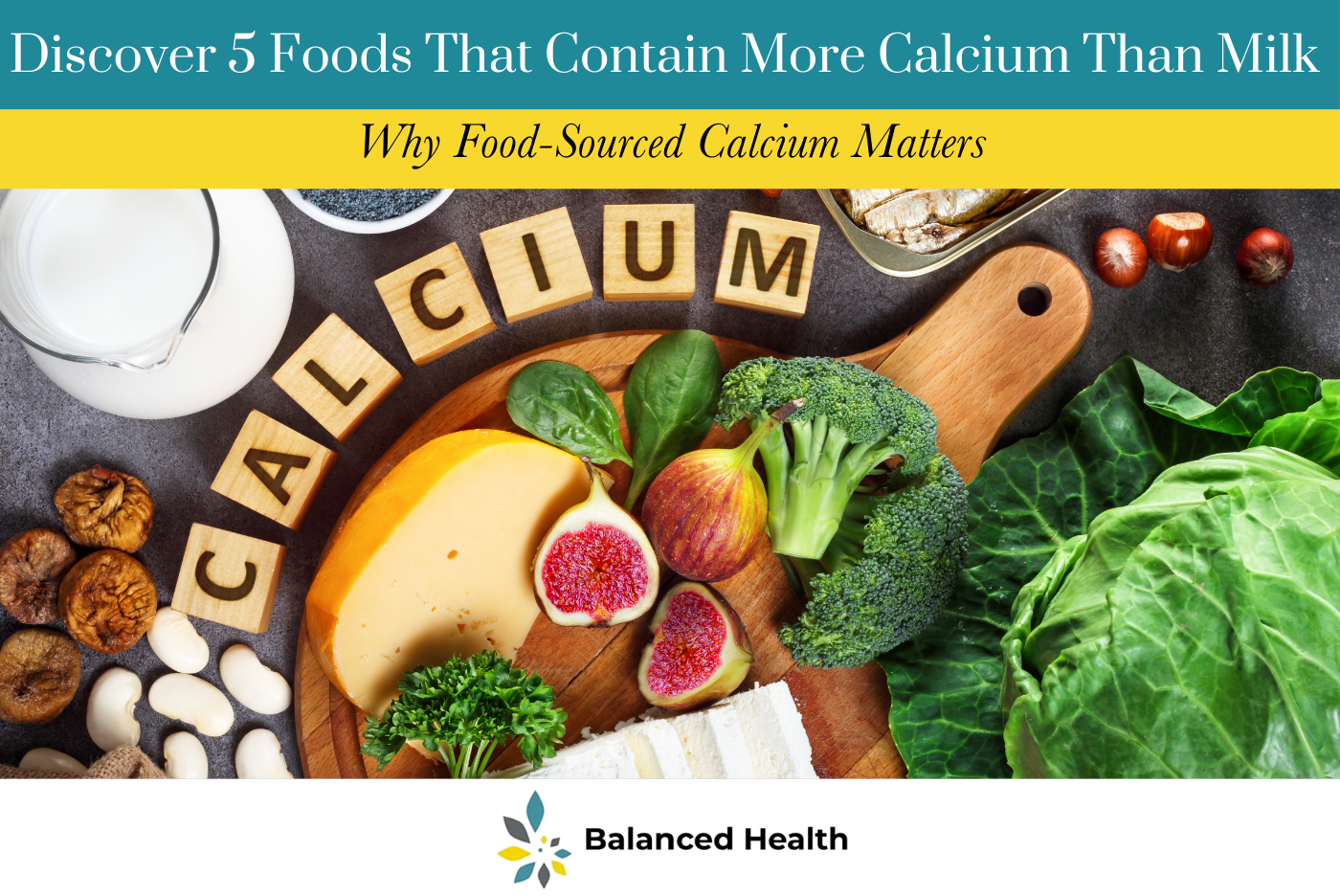
Why Is Calcium Important?
Calcium plays a vital role in maintaining strong bones and teeth, supporting muscle function, and facilitating proper nerve signaling. It is also crucial for blood clotting and maintaining heart health.
While supplements are available, they often lack the synergistic benefits that naturally calcium-rich foods offer, such as additional nutrients like magnesium, vitamin K, and phytonutrients, which support calcium absorption and bone health.
5 Foods That Contain More Calcium Than Milk
- Sesame Seeds (1/4 cup = 351 mg calcium)
Tiny but mighty, sesame seeds are one of the most calcium-dense plant-based foods. A sprinkle of these seeds on salads, smoothies, or stir-fries adds a delightful crunch and a major nutritional boost. Sesame seeds also provide magnesium, which works alongside calcium for optimal bone health. - Sardines (with bones) (3 ¾ oz can = 351 mg calcium)
Sardines are a powerhouse of nutrients. Their tiny, edible bones are rich in calcium, making this fish an excellent source. Additionally, sardines are packed with omega-3 fatty acids and vitamin D, which help improve calcium absorption and promote heart and brain health. - Collard Greens (1 cup, cooked = 268 mg calcium)
This leafy green is not only a calcium superstar but also a great source of vitamin K and antioxidants. Cooked collard greens can be added to soups, stews, or served as a side dish to boost your calcium intake naturally. - Spinach (1 cup, cooked = 245 mg calcium)
Spinach offers a generous amount of calcium alongside iron and magnesium. While it does contain oxalates that may slightly hinder calcium absorption, its overall nutritional benefits make it a valuable addition to your diet. - Turnip Greens (1 cup, cooked = 197 mg calcium)
These underrated greens are rich in calcium, vitamin C, and fiber, making them a nutrient-dense option for supporting bone health and digestion. They’re delicious sautéed with garlic or added to casseroles.
Why It’s Better to Get Calcium from Food
- Bioavailability
Calcium from food is more bioavailable than that from supplements, meaning your body can absorb and utilize it more efficiently. - Synergistic Nutrients
Foods naturally rich in calcium often contain other essential nutrients like magnesium, potassium, and vitamin K, which work together to support optimal health. - Reduced Risks
Over-reliance on calcium supplements has been linked to potential risks, such as kidney stones and cardiovascular issues. Getting calcium from food reduces these risks. - Diverse Health Benefits
Calcium-rich foods often come with added health perks, such as antioxidants in greens or omega-3 fatty acids in sardines, promoting overall well-being.
Q&A: Your Calcium Questions Answered
Q: How much calcium do I need daily?
A: Adults generally need 1,000–1,200 mg of calcium per day, depending on age and gender. Pregnant and breastfeeding women may require slightly more.
Q: Can I meet my calcium needs without dairy?
A: Absolutely! By incorporating foods like sesame seeds, sardines, and leafy greens, you can easily meet your calcium requirements without dairy.
Q: Is plant-based calcium as effective as calcium from animal sources?
A: Yes, although some plant-based sources contain compounds like oxalates, which can reduce absorption. Eating a variety of foods ensures you get adequate calcium and other nutrients.
Q: Should I take calcium supplements?
A: While supplements can help in some cases, it’s better to prioritize calcium-rich foods. Speak with a healthcare professional to determine if supplements are necessary for you.
Q: How can I improve calcium absorption?
A: Pair calcium-rich foods with vitamin D (found in fatty fish, eggs, or sunlight exposure) and avoid excessive intake of oxalate-rich foods at one time. Additionally, limit caffeine and sodium, which can reduce calcium retention.
Get in Touch with Balanced Health
At Balanced Health, we are committed to helping you achieve optimal wellness through personalized nutrition and holistic approaches. For more tips on improving your diet or to schedule a consultation, contact us today.
Balanced Health
📍 Address: 1819 Union St, San Francisco, CA 94123
📞 Phone: (415) 915-5454
📧 Email: contact@drerikahorowitz.com
🌐 Website: BalancedHealthSF.com
Let us help you make informed dietary choices that support a healthier, stronger you!
 Balanced Health
Balanced Health